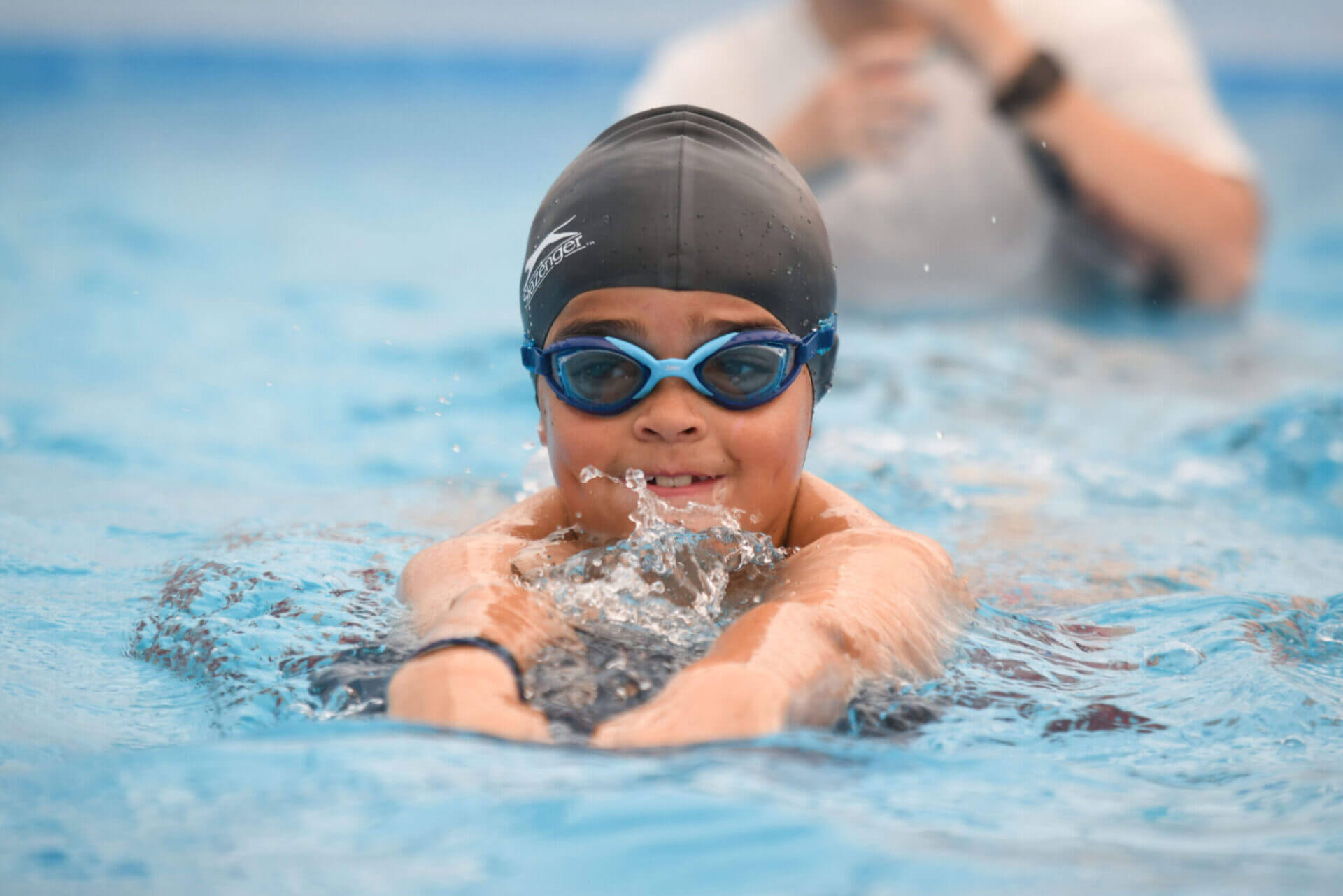Swimming is more than just a fun activity, it’s a vital life skill. Yet, across England, a worrying trend is emerging. One in four children leaves primary school unable to swim the National Curriculum’s recommended 25 metres. If nothing changes, that number could jump to six in ten by 2025.
This guide looks at the challenges behind these statistics. It also offers practical solutions for teachers and schools to improve their swimming programs. Every child deserves the chance to learn how to stay safe in and around water, and we should not leave anyone behind.
Why swimming matters in primary education
Swimming is not just a subject in school. A child’s physical, mental, and emotional growth is crucial.
- Health and Fitness: Swimming helps build strength, flexibility, and stamina. It supports cardiovascular health and contributes to overall well-being.
- Cognitive Benefits: Regular swimming can improve concentration and performance in the classroom.
- Confidence and Safety: Knowing how to swim boosts self-esteem and gives children essential skills to protect themselves around water.
- Inclusivity: Swimming is accessible to children of all abilities, including those with SEND, making it a powerful tool for inclusion and teamwork.
- Emotional Well-being: Swimming offers a break from academic stress, promoting relaxation and positive mental health.
The need for strong swimming education is even more urgent for children from Black, Asian, and Minority Ethnic backgrounds, who are underrepresented in swimming achievement. Equality of access is essential and urgent.

Swimming in schools today
Recent findings from Sport England reveal a steep drop in swimming ability post-pandemic. Just 72% of Year 7 pupils can swim the required 25 metres, down over 6% from pre-2020 figures. And the inequalities are stark:
- 80% of black children and 78% of Asian children don’t swim.
- Only 42% of children from less affluent families meet swimming targets, compared to 86% from wealthier backgrounds.
Pool closures during the pandemic made things worse, and rising energy costs are now threatening more closures. Schools need urgent support and smart solutions to address the gap.
Key challenges in delivering swimming lessons
Delivering consistent, high-quality swimming education is difficult. Here’s why:
- Limited Access to Pools: Many schools don’t have their own pools and face high costs or logistics issues getting to off-site facilities.
- Lack of Qualified Instructors: Even with pool access, many areas struggle to find skilled staff to teach swimming and water safety effectively.
- Budget Constraints: Especially in disadvantaged areas, funding regular lessons remains a major barrier even with some government support.
- Under prioritisation: Swimming is sometimes seen as less critical than other academic or sporting subjects.
Despite these barriers, solutions are out there. Schools can and should take action and here’s how.
5 practical ways schools can improve swimming provision
- Make the Most of Government Funding
Use the Primary PE and Sport Premium to support top-up swimming lessons and hire qualified instructors. Funding can also help cover travel or invest in new infrastructure. Apply strategically to create long-term improvements.
- Use Online Water Safety Resources
When pool access is limited, virtual learning steps in. The Royal Life Saving Society UK (RLSS UK) offers free online water safety lessons. These can supplement in-person sessions and keep water safety education going year-round.
- Support Children with SEND
Every child should be able to access swimming lessons. The Swim England Inclusion Hub provides tools and guidance to create inclusive swimming environments for pupils with Special Educational Needs and Disabilities.
Visit Swim England Inclusion Resources
- Consider ‘Pop-Up’ Pools
If your school lacks a pool, temporary pools could be a game-changer. These mobile, easy-to-install pools offer a flexible and cost-effective alternative to traditional swimming facilities, bringing lessons directly to your school grounds. They comply with safety standards and can dramatically boost access.
- Track and Share Swimming Outcomes
Since 2017, schools have been required to report Year 6 swimming proficiency. Use this as an opportunity to reflect, improve, and celebrate progress. Share success stories, identify gaps, and engage parents and the wider community in supporting swimming education.
Building a better future for swimming in schools
The challenges facing primary school swimming are real but not impossible to overcome. With the right mix of creativity, collaboration, and commitment, schools can transform their swimming provision.
Let’s not forget: swimming teaches resilience, confidence, and independence. It’s a life-saving skill every child has the right to learn, no matter their background.
Ready to take action?
Start by assessing where your school currently stands. Try the Primary School Swimming Review (PSSR) scorecard a free tool designed to help schools identify strengths and areas for improvement.
Let’s make swimming a success story for every child. Let’s dive in, together.


